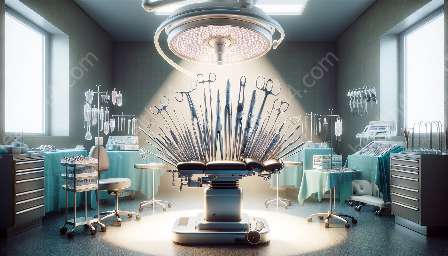An endoscope is a valuable medical device used in surgical procedures and examinations. It offers intricate insights into the body, making it an indispensable tool in modern medicine. In this comprehensive guide, we will delve into the various aspects of endoscopes, their role in conjunction with surgical instruments, and their significance within the realm of medical devices & equipment.
The Functions of Endoscopes
Endoscopes are versatile instruments that have revolutionized the field of medical diagnostics and surgery. These devices enable medical professionals to visually inspect the interior of the human body without the need for invasive procedures. By using advanced imaging technology, endoscopes provide high-definition views of internal organs and tissues, allowing for accurate diagnoses and targeted interventions.
Types of Endoscopes
There are several types of endoscopes designed for specific medical applications. These include:
- Gastrointestinal Endoscopes: Used for examining the digestive tract, including the esophagus, stomach, and intestines.
- Bronchoscopes: Designed for visualizing the airways and lungs, aiding in the diagnosis of respiratory conditions.
- Cystoscopes: Used to examine the bladder and urinary tract, facilitating the detection of urological problems.
- Arthroscopes: Specifically crafted for exploring and treating joint-related issues, such as those in the knees and shoulders.
Benefits of Endoscopes
Endoscopes offer numerous advantages in medical practice, including:
- Precision: Endoscopic procedures allow for highly precise examination and treatment, minimizing the risk of damage to surrounding tissues.
- Minimally Invasive: Endoscopic techniques reduce the need for traditional open surgery, leading to shorter recovery times and decreased patient discomfort.
- Diagnostic Clarity: The high-resolution imaging capabilities of endoscopes enhance the accuracy of diagnoses, enabling targeted therapies.
- Laparoscopic Tools: Designed for use in minimally invasive abdominal surgeries, such as appendectomies and gallbladder removal.
- Endoscopic Graspers and Scissors: These specialized tools allow surgeons to manipulate and dissect tissue under endoscopic guidance.
- Trocars and Cannulas: Essential for creating access ports during endoscopic surgeries, facilitating the introduction of instruments and the insufflation of gases.
- Electrosurgical Devices: Used in conjunction with endoscopes to precisely cauterize or coagulate tissues during minimally invasive procedures.
- Imaging Systems: Advanced imaging platforms enhance the visualization capabilities of endoscopes, providing clear and detailed images for effective diagnosis and treatment planning.
- Light Sources and Fiber Optics: These components are integral to illuminating the internal organs and cavities being examined, ensuring optimal visibility during endoscopic procedures.
- Insufflators and Pumps: These devices are essential for maintaining the appropriate pressure and gas levels within the body cavities during endoscopic surgeries and examinations.
- Endoscopic Accessories: Various accessories, such as cleaning brushes, biopsy forceps, and suction devices, complement endoscopes, enhancing their functionality in diverse medical settings.
Endoscopes and Surgical Instruments
Endoscopes work synergistically with a wide range of surgical instruments, enabling minimally invasive procedures and precise interventions. These instruments include:
Integration of Endoscopes with Medical Devices & Equipment
The integration of endoscopes with other medical devices and equipment is crucial for optimizing surgical outcomes and patient care. This includes:
Conclusion
Endoscopes play a pivotal role in modern medicine, enabling minimally invasive procedures, precise diagnostics, and targeted interventions. Their integration with surgical instruments, as well as other medical devices and equipment, underscores their significance in enhancing patient care and medical outcomes. As technological advancements continue to propel the evolution of endoscopic tools, their impact on the field of healthcare will undoubtedly remain profound and far-reaching.


